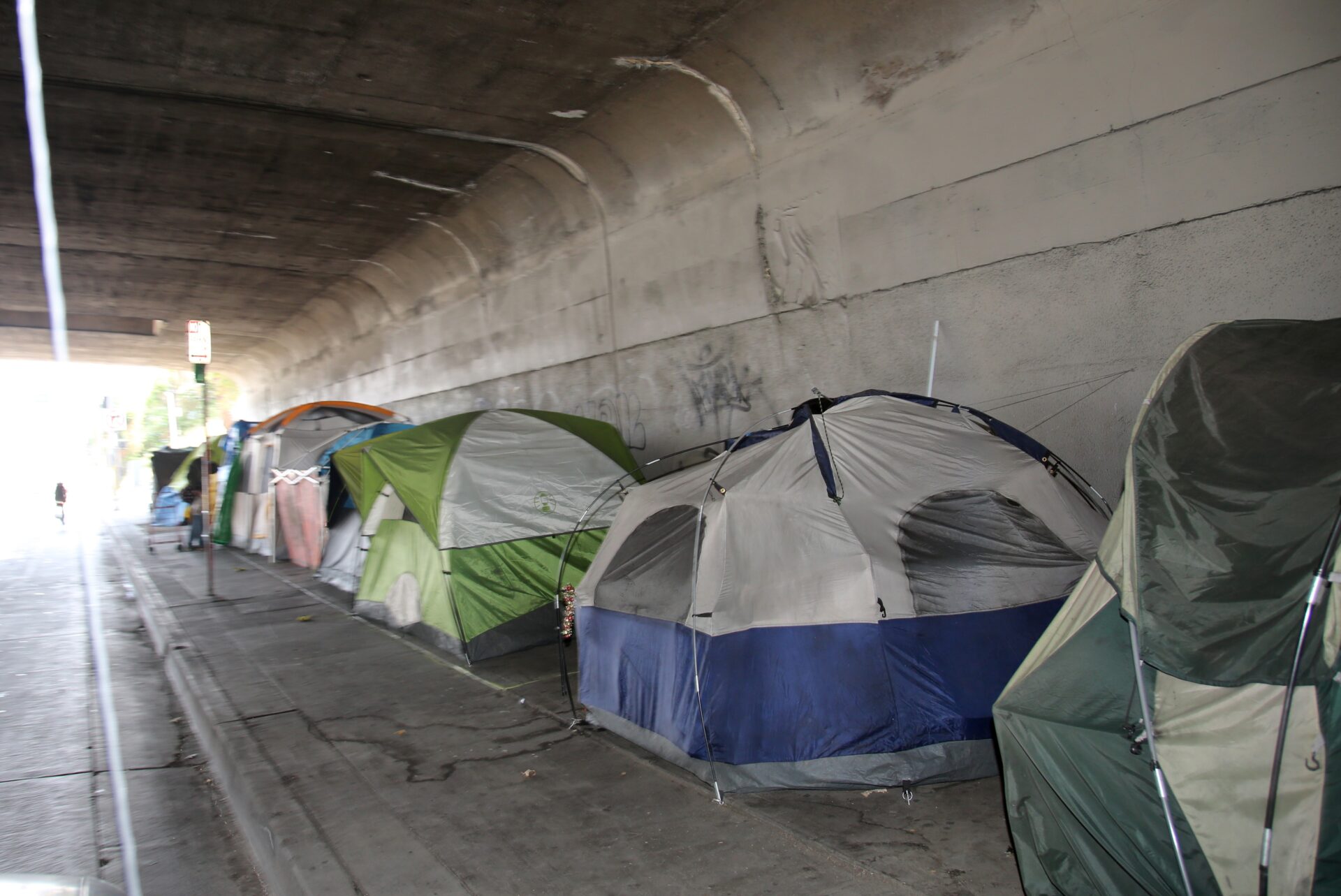By EDWARD PINTO
On December 15, HUD released its annual Point-In-Time (PIT) homeless and housing inventory counts (HIC) conducted in January 2023. The key finding was that homelessness reached a record high as the 2023 annual count increased 12% and 18% respectively from 2022 and 2017.
The average rate of homelessness per 1,000 population in 2023 was 20. The PIT is calculated for the 381 local and state Continuums of Care (CoC), which HUD uses to track homelessness.
The hundred-plus page report had lots of data along with a handful of anecdotal references to burgeoning housing purchase and rental costs. However, it contained precious little insight as to the steps needed to address our burgeoning homeless problem.
Conspicuous in its absence was a systemic analysis as to the role increasing home prices relative to income (displacement pressure) has on the rate of homeless displacement. This is a glaring omission by the Department of Housing and Urban Development (HUD) since there is broad recognition that “no factor matters more to homelessness than access to housing ” or that “the actual solution to the housing crisis (is) building enough homes.”
There is also a recognition that while “poverty, mental illness, addiction, and other issues do play roles, but they are less significant” than the lack of abundant housing.
Recent research by the American Enterprise Institute (AEI) Housing Center validates these observations. Using 2019 PIT counts to calculate homeless displacement rates per 1,000 population, we found that an area’s median home price to median income ratio (displacement pressure) was, among 54 variables tested, the one best able to explain the amount of variation in displacement rate across 369 areas.
Specifically, displacement pressure can explain 78% (89% for CoCs >=1 million population) of the variance in the rate of homelessness across the 369 CoCs, a rate substantially higher than any of the other 53 market predictors tested and higher than those found by “Market Predictors of Homelessness,” a study commissioned by HUD.
One might have thought that area median rent to median total income ratio would have had higher explanatory value regarding the rate of homelessness than displacement pressure, but it had much less. The reason is that the real estate market is like a giant game of musical chairs, and the game starts at the top with the most expensive homes and moves down the homeowner and renter chain.
If there are too few chairs, those with less financial wherewithal end up without a chair. We found that areas with a displacement pressure ratio of 3.0 had an expected displacement ratio of 1.0 per 1,000, but where the displacement pressure ratio is 7.0, the displacement rate was four times higher.
This can be illustrated by comparing Houston’s displacement pressure and rate of 0.5/1,000 and 3.7 respectively to Los Angeles’s (LA’s) 7.3/1,000 and 9.8 respectively. This means LA has a displacement rate 14 times Houston’s.
There are two reasons Houston has been successful. First, in spite of decades of rapid growth, home building has largely kept up with demand. As a result, the median house price in Houston remains below the national median, with home prices and rents being about 1/3 and 1/2 respectively of those in LA.
Second, since 2012, Houston has implemented a regional response to homelessness known as ‘The Way Home’, which is credited with housing over 28,000 individuals and families, with 90% still housed to this day, with an overall reduction in homelessness of 62% since 2011.
The AEI Housing Center has conducted case studies in Seattle, Houston, Philadelphia, Palisades Park, NJ, and Charlotte, and in each case found that by-right light-touch density (LTD) plus the Keep It Simple Stupid (KISS) rule unleashed American ingenuity undertaken by swarms of property owners, small businesses, and workers. LTD legalizes housing types compatible in scale with single-family houses, such as duplexes, triplexes, fourplexes, townhouses, courtyard apartments, cottage housing, accessory dwelling units, and single-family attached and detached homes on smaller lots.
Just four states (California, New York (really NYC), Washington, and Oregon) account for 21% of the nation’s population, but have about half of the point-in-time homeless count. The good news is that these same four states account for nearly 50% of the nation’s economically viable LTD in-fill housing potential.
State and local governments just need to get out of the way by legalizing by-right LTD combined with Keep It Simple Stupid (KISS) land use and permitting regulations. The market will take care of the rest by providing millions of additional homes over the next 10 years, housing for our children and grandchildren, and homeless rates more like Houston’s than LA’s.
Edward Pinto is a Senior Fellow and Codirector of the AEI Housing Center. This was originally published by Real Clear Markets.
